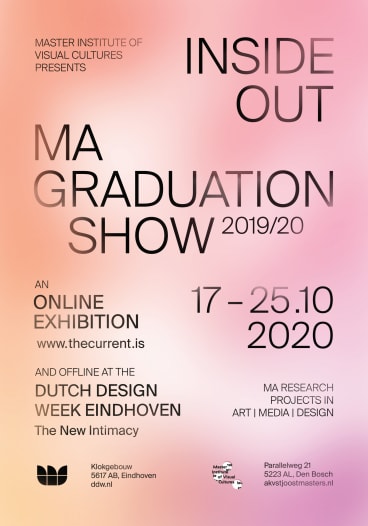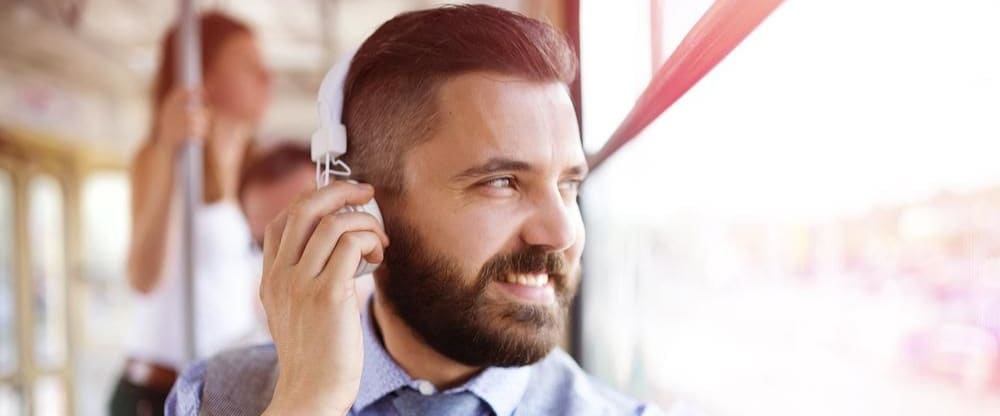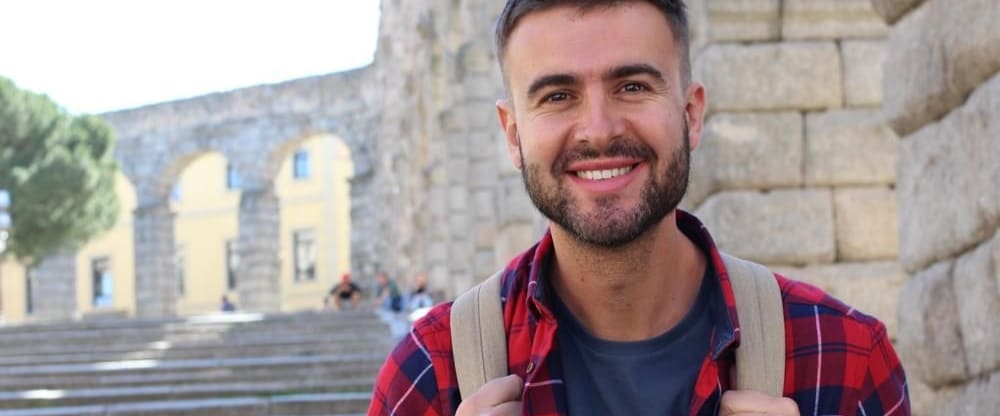Creating a Better World Through the Arts
The challenging times millions around the world are facing amid COVID-19 have brought into sharp relief the need for the arts, as a means by which people can express themselves, understand the effects of this strange reality, and create a better world post-pandemic. Not forgetting the visionary power of the arts and its ability to forge new ideas, while the 'new normal' has certainly presented a sense of temporality and progress in retreat, many talented arts students and graduates are using this unique opportunity to develop and showcase their work in innovative ways.
- Education

The Master Institute of Visual Cultures (MIVC), part of the St. Joost School of Art & Design in the Netherlands, provides innovative education to facilitate answers on these questions. It has the aim of creating another world, a better world, at the heart of its master's programmes. This is more urgent now than ever before, set against the emergence of a new world where the pandemic has made apparent social and economic injustices. The expanded pedagogical scope of the MIVC has created new opportunities for transdisciplinarity, interdisciplinarity, and co-research across its master's pathways: Ecology Futures, Post-contemporary Practice and Situated Design.
Dr. Úna Henry explains, “It is MIVC's mission to contribute to the world we live in, working collaboratively and creatively with the cultural and creative sector, NGOs, business, and government to generate new knowledge and exchange of that knowledge, to imagine another future capable of transforming the world we live in. The MIVC provides a transformative education, empowering students to become the new generation of artists and designers who will contribute in novel ways to changing the complex and interconnected world we live in.”
It does this by having created, and continuing to develop, a unique educational environment, where the tradition of studio practices sits at ease with practices driven by ideas and context, and where artists, scientists and designers together, through an interchange of ways of thinking and co-research, create new knowledge to tackle some of the most pressing and challenging societal issues of our time. Highlighting the societal ramifications of creative work, MIVC prides itself on the civic responsibility it has to be a thought leader, demonstrating the value of creativity to society and contributing to increased awareness and understanding of the importance of art and design as a field of knowledge. By adopting a transdisciplinary approach that melds art and science, its educational programmes address urgent global challenges and connect to six thematic currents in the field: Migrant Aesthetics, Heterodox Identities, Economics of Production, Emerging Technologies, Ecological Degradation, and Creative Industries.

The interdisciplinary curriculum across the Master of Fine Art and Design (MA FAD) offers students flexibility, as well as a fixed programme of mandatory courses and elective modules shared across MA pathways in Situated Design, Visual Arts and Post-contemporary Practice and Ecology Futures. Fixed elements are: Independent Studio Practice, General Academic Studies (GAS), Professional Practice and pathway-specific Research Seminars. Flexible elements allow students to design their own curriculum through elective modules, tutorials (one-to-one and group), group critiques, skills-based workshops, lectures, and excursions. Residencies Internships, a PhD preparatory trajectory, and Research Fellowships offer students the possibility to broaden the spectrum of their personal curriculum choices.
Each pathway has a specific focus on contemporary artistic methods that are bounded to the discipline and promote critical and creative capacities. MA Situated Design students learn how to provide meaning to the world outside of the studio. In an interdisciplinary learning environment, students explore how to take environmental, social, cultural, and political factors as the basis for design processes and experiment to develop a critical practice.
Through exposure to a variety of design methodologies and practices, students learn to iterate design concepts and are able to analyse, inform, and shape their projects from concept to final project. Students learn to design with emerging technologies and creative software to create new perspectives and innovative forms of design and user experiences. On the basis of partnerships with commercial, governmental, scientific and cultural organisations, the master's programme offers a range of real-world challenges to engage with. Working on these challenges, students develop the skills, experiences and critical mindset required for design after the situated turn.
MA Visual Arts and Post Contemporary Practice students develop practice-led and process-orientated artistic research which is supported by research-led teaching. In an interdisciplinary learning environment, students have the opportunity to develop independent and collaborative research projects. Through an informed, critical, and reflexive approach, students develop and evaluate their practice in a peer-to-peer learning context. Connecting cultural studies and visual and digital cultures, students focus on generating strategies and praxes, which are theoretically informed, through speculative and materialist practices. Students re-envision artistic engagement through an open-ended and creative process.
MA Ecology Futures focuses on the role of new media art and design research in interpreting, analysing, critiquing, experiencing, and visualising ecological degradation and its broad network of cause and effect. At its core, it considers societal, political, economic, and environmental issues as ecological, and unpacks its complexities through a multitude of transdisciplinary methodologies and theories. The pathway supports interdisciplinary art and design practice-led research, interconnected with science, technology, and philosophy. If ecology is the science of all the relationships that make up the environment of organisms and living creatures in general, then Ecology Futures is proposing art and design as a way of examining the relationships that construct an environment.
Inside Out: MA Graduation Show 2020, 17 October - 25 October
During this exhibition, graduating MIVC students will showcase their unique work for all to see! They state, “From our insides to your home, we have developed a special digital exhibition, with a plurality of curated content, including digital sculptures, videos, artists’ books, livestream performances, real-time online interactions, and much more. We will be live from 17th to 25th October 2020, with a most festive digital opening on the 16th. We look forward to going inside out with you on our platform.”

This year, graduates will share their graduation projects with their audience beyond the art school walls. They will do so in an unusual, though unique inside out time. Like many, they moved indoors with the arrival of the COVID-19 pandemic, or found themselves locked in some place in other ways. Their rooms became studios, computers turned into classrooms, and were challenged to adapt their practices and graduation projects to these new circumstances.
They were suddenly asked to answer questions about materiality, physicality, and intimacy from a whole new angle. What do these concepts mean to them in their individual projects, and how do these meanings articulate themselves in a time where the digital is the predominant space of interaction? To suddenly deal with these questions -- at the very end of a master’s degree -- was a challenging inside out process in itself. But also one that brought new opportunities. Like the apt and completely-with-the-times inside out possibility to bring the graduation show to the world virtually.
As the theme of the graduation show, inside out, became more relevant during this pandemic, the questions they had been asking about it feel more urgent too. Because what does inside out imply today? At its simplest, inside out means turning something that is on the inside to face the outside. It refers to the act of making your inner-workings -- your thoughts, ideas, and images -- visible to the outside world through your artistic and design practice. Such an act is also social. When students put their work out into the world, they establish the possibility for dialogue between the insides of themselves and those of others. As such, inside out is a process of communicating perspectives. These perspectives centre around how identities are presented to the outside world, or how the outside world places expectations on them.
Here is what the curatorial statement says about the show and its theme: “They can be perspectives from smaller communities within the world, which we might not hear or see, until we go inside and enter into interactions. As we weave through everyday life, the borders between these communities, ourselves, and others are in a constant flux, like liquid flowing through membranes. Therefore the act of going inside and out is not something we do once, but repeatedly, as we position and reposition ourselves to everyone and everything around us.
“Inside out is therefore also something fluid, rather than static, and is closely connected to where we place ourselves. These placements can be deliberate -- ‘I position myself inside this community’ -- but they can also be done by ourselves and/or others unconsciously, based on where we are born, how we understand our bodies, or how we are socialized culturally. Inside out is therefore also political, and turning your insides out --investigating your memories, dreams, and family histories -- can be challenging and uncomfortable, even if doing so feels necessary and right.”
“We might learn that our inner perspectives support systems of oppression, belittling, bias, or hatred. Or that who we think we are or want to be is not chosen by us. Or maybe it does not fit with the times wherein we are born, the ways we want to behave, or the future we want to create.
“Finally, inside out draws out how we think about things in relation to each other, like indoors and outdoors, public and private, digital and physical spaces, or the earth seen from outer space and the earth seen from its crust. The answer to the question ‘what does inside out mean?’ is one that is complex, and it includes many different and overlapping angles.”
Want to explore these ideas too? Then check out MIVC on Facebook, Instagram, and LinkedIn, and visit the Inside Out: MA Graduation Show 2020 from the 17th to the 15th of October!
Article written in association with St. Joost School of Art & Design, part of Avans University of Applied Sciences.
Find your perfect program
Use our search to find and compare programs from universities all over the world!
Avans University of Applied SciencesFind a program in these categories


